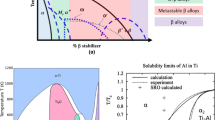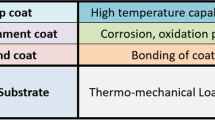Abstract
Due to complexity the analysis of low cycle fatigue behaviour of long fibre reinforced metal matrix composites needs to take into consideration viscoplastic deformation and damage of the matrix, damage deactivation processes and manufacture residual stresses. Therefore, a comprehensive material model especially feasible for the description of cyclic material behaviour is presented for the metallic matrix. This model not only takes into account damage treated by means of the continuum damage mechanics. In addition, a final failure criterion allows the consideration of the crack path in the matrix of the composite. As multidirectional laminates show a much more complex damaging behaviour than unidirectional composites do, a bi-directional fibre arrangement is investigated. Therefore a three-dimensional finite element analysis is necessary to examine such types of composites. Premising the presented material model not only the development of continuous damage in the composite can be computed for various external loadings. Cracks following the continuous damage process grow parallel and circumferentially to the fibre in the off–axis layer. Therefore, it can be stated that the fatigue behaviour is strongly influenced by plies perpendicularly loaded. The damage and crack process shows also strong effects on the macroscopic mechanical behaviour of the composite such as a decrease of the absolute values of maximum and minimum stresses and a loss of unloading modulus.
Similar content being viewed by others
References
Chaboche, J.L. (1977). Viscoplastic constitutive equations for the description of cyclic and anisotropic behaviour of metals. Bulletin de l' Academie Polonaise de Sciences, Série des Science Technique 25, 33–42.
Chaboche, J.L., Kruch, S. and Pottier T.(1998). Micromechanics versus macromechanics: a combined approach for metal matrix composite constitutive modelling. European Journal of Mechanics – A/Solids 17, 885–908.
Flom, Y. and Arsenault, R.J. (1986). Deformation of SiC/Al composites. Journal of Metals Jul. 1986, 31–34.
Fries, V., Ismar, H. and Penth, M. (1997). Inelastic deformation behaviour of AlMgSi1. Mechanics Research Communications 24, 359–370.
Gurson, A.L. (1977). Continuum theory of ductile rupture by void nucleation and growth: Part I-Yield criteria and flow rules for porous ductile media. Journal of Engineering Materials Technology 99, 2–15.
Hansen, N.R. and Schreyer, H.L. (1995). Damage Deactivation. Journal of Applied Mechanics 62, 450–458.
Ismar, H. and Schmitt, J. (1990). Zur zyklischen Belastung einer Aluminiumle gierung im Bereich kleiner plastischer Formänderungen. Zeitschrift für Angewandte Mathematik und Mechanik 70, T324–T327.
Ismar, H. and Schröter, F. (1999). Modelling and numerical simulation of the thermomechanical behaviour of a cross–ply MMC. Computational Materials Science 16, 259–266.
Johnson, W.S. (1983). Modelling stiffness loss in boron/aluminium laminates below the fatigue limit. Long–Term Behavior of Composites, ASTMSTP 813 (Edited by T.K O'Brien), American Society for Testing andMaterials, Philadelphia, 160–173.
Kachanov, L.M. (1958). Time of the rupture process under creep conditions. Izv Akad Nauk S.S.R. Otd. Tekh Nauk 8, 26–31.
Lemaitre, J. (1992). A course on damage mechanics, Springer-Verlag, Berlin.
Mahrenholtz, O. and Ismar, H. (1979). Ein Modell des elastisch–plastischen Ñbergangsverhaltens metallischer Werkstoffe. Abhandlungen der Braunschweiger Wissenschaftlichen Gesellschaft 30, 138–144.
Needleman, A. and Tvergaard, V. (1984). An analysis of ductile rupture in notched bars. Journal of the Mechanics and Physics of Solids 32, 461–490.
Penth, M. (1998). Modellierung des viskoplastischen Materialverhaltens von AlMgSi1 und X5CrNi18.10, PhD– Thesis, Saarbrücken.
Saff, C.R., Harmon, D.M. and Johnson, W.S. (1988). Damage initiation and growth in fibre-reinforced MMCs. Journal of Metals, November, 58–63.
Sherwood, J.A. and Quimby, H.M. (1995). Micromechanical modelling of damage growth in titanium based metal–matrix composites. Computers and Structures 56, 505–514.
Wulf, J., Steinkopff, T. and Fischmeister, H.F. (1996). FE–simulation of crack paths in the real microstructure of an Al(6061)/SiC composite. Acta Materialia 44, 1765–1779.
Author information
Authors and Affiliations
Rights and permissions
About this article
Cite this article
Ismar, H., Schröter, F. & Streicher, F. Numerical investigation of low cycle fatigue of aluminium reinforced by SiC–fibres. International Journal of Fracture 104, 257–271 (2000). https://doi.org/10.1023/A:1007645700312
Issue Date:
DOI: https://doi.org/10.1023/A:1007645700312




